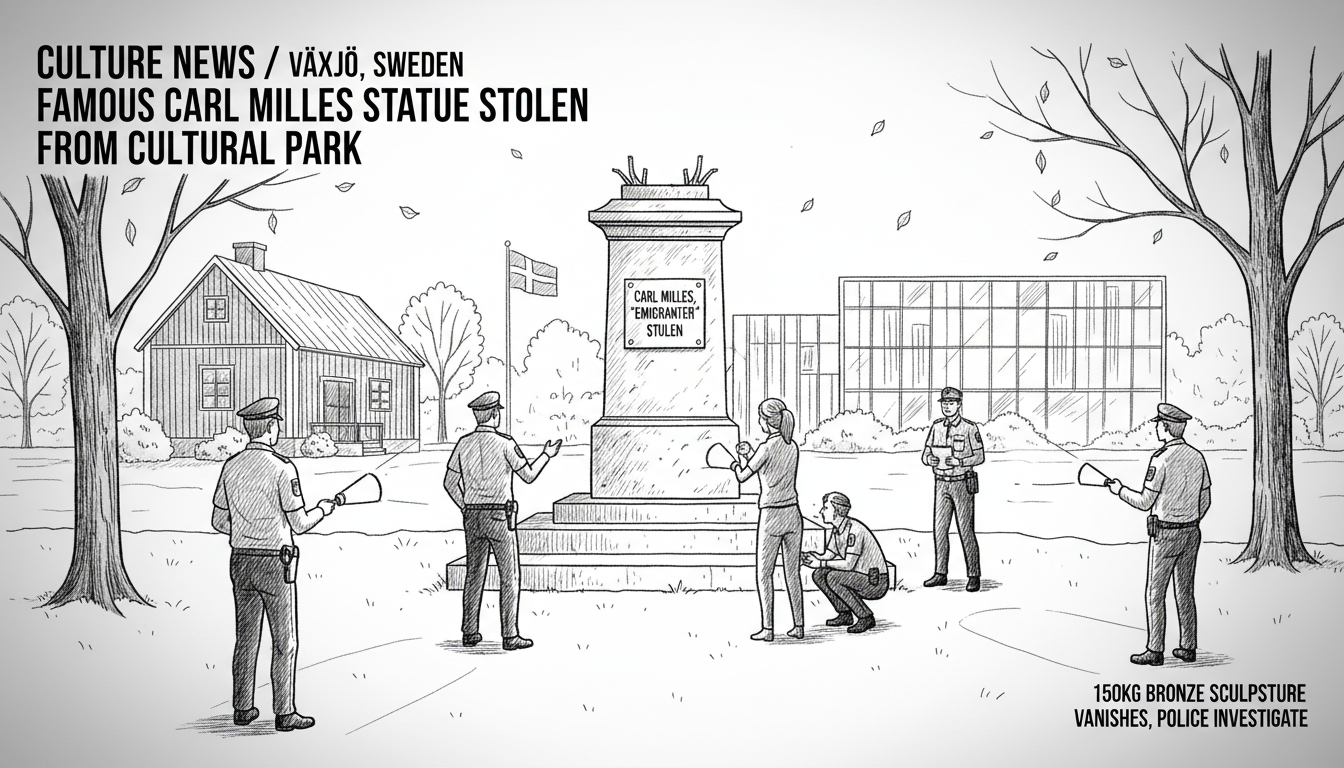A prominent bronze sculpture by renowned Swedish artist Carl Milles has been stolen from Växjö's Cultural Park. The theft was discovered on Monday morning by the park's director Lennart Johansson. The statue depicts seven emigrants sitting on a large fish and weighs between 100-150 kilograms.
This is not the first time this particular artwork has faced challenges. The sculpture was originally created in 1940 and underwent restoration in 2010 to help support the museum's finances. Since 2023, it had been displayed outside the House of Emigrants, making it accessible to the public but also more vulnerable to theft.
Carl Milles remains one of Sweden's most influential sculptors, primarily active during the first half of the 20th century. His works are celebrated for their dynamic compositions and emotional depth. The stolen Växjö statue represents an important chapter in Sweden's emigration history, making its loss particularly significant for cultural heritage.
Police have launched an investigation into the theft of the Carl Milles statue. The substantial weight of the bronze sculpture suggests multiple individuals were likely involved in its removal. Authorities are examining security footage and seeking witnesses who might have observed suspicious activity around the Cultural Park.
This incident raises serious questions about outdoor art security in Swedish public spaces. Many municipalities display valuable artworks in parks and public squares with limited protection. The theft highlights the ongoing challenge of balancing public access with security measures for cultural treasures.
Cultural heritage experts express concern about the growing market for stolen artworks. Bronze sculptures are particularly vulnerable because they can be melted down for their material value. The loss represents more than just financial damage—it erases an important piece of Sweden's artistic legacy and connection to its emigration history.
What happens to stolen public art in Sweden? Most pieces either disappear into private collections or get destroyed for scrap metal. The recovery rate for stolen sculptures remains disappointingly low. This pattern suggests the thieves likely had a specific buyer in mind or planned to dismantle the artwork for its bronze value.
The theft comes at a difficult time for Sweden's cultural institutions. Many are facing budget constraints that limit their ability to implement comprehensive security measures. This incident may prompt other municipalities to reassess how they protect their public art collections.
Local residents have expressed shock and disappointment about the missing statue. Many considered it a landmark that connected them to Sweden's broader cultural history. The community hopes for the artwork's safe recovery, but realistic expectations suggest the chances are slim based on similar past cases.

